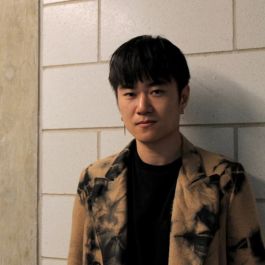An online search for “innovative workplace cultures” will yield a plethora of books, gurus and courses that examine how companies successfully develop products and processes that propel enterprises forward. In almost all cases, the secret sauce is having individual contributors and leaders who are comfortable with risk and failure — while maintaining an unshakeable drive to succeed in the long run.
Zocdoc, the New York-based telemedicine platform for medical and dental care providers and patients, has achieved impressive growth in national reach and valuation due to nimble, innovative responses to the changing face of healthcare. John Qiu, senior manager of product analytics at Zocdoc, shared with Built In NY the kind of creativity needed in a fast-paced environment and industry.

ZocDoc aims to build products and services that simplify and streamline the overall healthcare journey for patients and providers.
How do you signal to your team members that it's OK to take risks, experiment with their craft — and be OK with potential failure in the process?
I’d define risk in the context of failing fast and learning. There is the most obvious element, which is building a feature that does not achieve the success metric — or tilts in the wrong direction. Another risk element is opportunity cost: the time spent creating a specific feature that could have been spent on other projects. I think about risk as both the magnitude and direction of the outcome, as well as the effort spent to reach that outcome.
At Zocdoc, we encourage risk-taking by controlling and minimizing the risk itself. We embrace an iterative design process that focuses on sculpting a minimum viable product. We build the most bare-bones version of our feature that can test our product hypothesis. This minimizes one risk element, which is the opportunity cost of time.
Zocdoc’s culture is heavily rooted in experimentation. We launch almost every new initiative via an A/B test — an experiment to identify which of two variants perform best — which allows us to not only limit and control exposure for high-risk features but detect meaningful metric movements in the shortest amount of time.
In short, we build a risk-taking culture and acceptance of failure by minimizing the cost of failing
We build a risk-taking culture and acceptance of failure by minimizing the cost of failing.”
Tell us about a time that you or a team member took a risk with their work and it did or did not work out.
A common pain point for patients in healthcare is having a specific medical issue and struggling to match with a doctor who specializes in that issue. We saw this in Zocdoc’s booking flow, where a patient with a knee problem would search for “orthopedic consultation” and make a booking — only to find out the doctor is an expert in shoulders and doesn't actually treat knees.
Our team prototyped a custom booking flow for orthopedic searches where we ask a set of guided questions in the booking process in order to surface a list of the most relevant providers. We knew that elongating the booking flow came with the risk of user friction and potential drop-off.
It didn’t work the first time: We tanked conversion rates for ortho searches. After assessing drop-off points, we iterated and launched version two with a simplified flow, prioritizing only the key questions to help patients match themselves with the right specialists. In doing so, we almost entirely eliminated our generic orthopedic consultation visit reason while maintaining conversion rates and reducing cancellations.
How does encouraging team members to be experimental with their craft allow them to learn, grow and develop in the process?
An advantage of an experimental culture is that it almost forces us to reconsider the assumptive constraints we work within and to fundamentally deepen our understanding of user behavior.
The nature of product experimentation is to uncover user problems and quickly validate — or invalidate — our hypotheses on solving them. Some of our most impactful learnings are the most unexpected. The team is able to develop a strong creative sense, product intuition and critical problem-solving skills through experimentation.
One of our most heavily tested areas is appointment time slots on the search page. We historically operated under the assumption that, depending on the visit reason, increasing time slot choice would boost conversion — and were baffled when multiple tests showed the opposite. Further unraveling this behavior, we discovered that too much choice can lead to decision paralysis and a lack of trust in the fidelity of the available appointment times. This insight was eye-opening for our team and greatly reshaped our direction for surfacing providers’ availability.
This ethos and structure might not eliminate all insecurities that staff might have over innovation. But it’s a reminder to all that a conscious approach to balancing risks versus rewards is an indicator that innovation thrives in firms like this.






